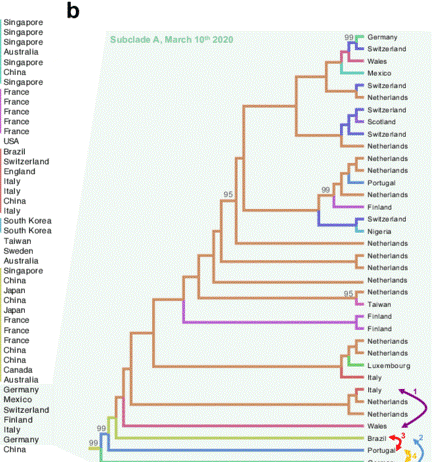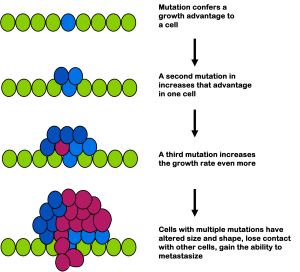Wrap-up questions
1. Adaptation and evolution depend on variation in a population. Other chapters mentioned the genetic homogeneity of bananas: virtually all bananas commercially available today are genetically identical Cavendish bananas. The Cavendish banana supplanted the Gros Michel banana, which was the dominant market banana until the 1950s when the banana disease Fulsarium wilt decimated the crop worldwide. Explain why genetically homogenous populations are particularly susceptible to disease and why a genetically varied population might be more resistant.
2. Would you choose a highly conserved or poorly conserved region of the genome to determine the relationship among individuals of the same species? Explain your reasoning.
3. Describe how a molecular clock is used to determine how long ago two species shared a common ancestor and explain why additional information like the fossil record is needed to calibrate the clock.
4. Figure 13 from this chapter, reprinted here, shows a cladogram of the relationship of SARS-Cov2 samples isolated from patients in the early days of the COVID-19 pandemic. From where did the Luxemburg patient most likely acquire their COVID-19 infection?
5. Explain how Figure 19 below, reprinted from the Cancer chapter, illustrates natural selection.

Science and Society
6. Race is based on culture and not genetics, but in human medicine, patients are often identified by race. Racial categories can be used to influence treatment plans despite race being a poor proxy for genetics. Given that both biology and society play a role in human health, how should race be used in data collection and medical recommendations? Use outside resources as needed to support your argument.
Media Attributions
- Figure 13 left Sequence Analysis © Researchgate.net is licensed under a CC BY-NC-ND (Attribution NonCommercial NoDerivatives) license
- Figure 19 DNA Repair © Amanda Simons is licensed under a CC BY-SA (Attribution ShareAlike) license

